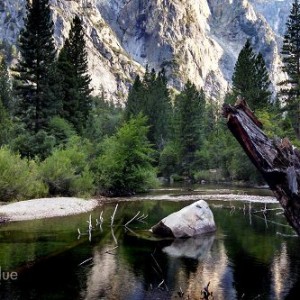Federal Water Tap, September 1: EPA Criticizes Restoration Plan for California’s Water Hub
The U.S. Environmental Protection Agency criticized a $US 25 billion water supply and ecosystem restoration plan for California’s Sacramento-San Joaquin Delta, saying that the plan would violate federal Clean Water Act standards for water quality and may not produce the desired habitat improvements.
The delta is the largest estuary on the U.S. west coast and a hydrological switchyard for California, supplying drinking water to 27 million people and irrigation water for more than 3 million acres. Home to endangered species, the delta is also at risk of becoming too salty for fish and people, thanks to rising seas, diminishing supplies of freshwater, and shipments of water out of the delta.
After reviewing a draft environmental assessment, the EPA concluded that operating the two proposed water-diversion tunnels – each 30 miles long and wide enough to encircle a small house – would send higher-quality water out of the delta to cities and farms. But water in the delta would have higher concentrations of bromide, chloride, mercury, and selenium, contaminants all.
The agency is concerned that the plan’s goals for fish protection rely too heavily on coaxing back to health some 150,000 acres of wetlands, grasslands, and riverside zones. The draft review does not say whether that amount of land would be available, the EPA asserted.
The EPA also questions why the draft review does not assess how the plan would affect water supplies and ecosystems upstream and downstream of the delta.
The criticisms came in a 43-page letter sent from Jared Blumenfeld, EPA Region 9 administrator, to Will Stelle, regional administrator for the National Marine Fisheries Service, one of three federal agencies that worked on the environmental review.
State and federal agencies announced earlier last week that parts of the draft environmental review would be rewritten by early 2015, thus delaying the plan’s approval.
Forest Fire and Water
An Obama administration program that seeks to reduce the risk of fire damage in the watersheds above important drinking water reservoirs has a new pairing.
Together with a forest nonprofit, local, state, and federal agencies will develop a five-year plan for the watershed above C.C. Cragin reservoir in central Arizona. The plan will outline areas where trees will be cleared by fire and which by chainsaw and who will contribute the money. Severe fires can cause soil erosion, which mucks up the water, and swamp reservoirs with debris.
Reservoirs in five other western states – California, Colorado, Idaho, Montana, and Washington – are part of the Western Watershed Enhancement Partnership, established in July 2013.
Desalination Research
The Bureau of Reclamation awarded grants totaling $US 1.4 million to nine research projects that will investigate ways to remove salt from water.
The recipients, including cities, universities, and water districts, are located in Arizona, California, New Mexico, and Texas. In Los Angeles, San Diego, and Corpus Christi, Texas, the money will go toward feasibility studies for municipal desalination plants. The project run by the University of Arizona will assess a method for recycling the brine produced by desalination. Researchers will see how effective the brine is for farming salt-tolerant plants.
International Transmission Line
The New England Clean Power Link is a $US 1.2 billion high-voltage 1000-megawatt electric transmission line that will be buried under land and water to connect electricity from hydropower dams in Quebec with the New England grid.
The Department of Energy will prepare an environmental review of the project’s effects on wetlands, floodplains, and water resources, among other items. Nearly two-thirds of the 248-kilometer (154-mile) route will be laid beneath or atop the bed of Lake Champlain, on the New York-Vermont border.
Forest Management
Three national forests in California will be among the first in the United States to write management plans according to new guidelines approved in 2012.
Plans for the Inyo, Sequoia, and Sierra national forests were last updated between 1988 and 1992. The new plans will take into account how climate change will affect riverside ecosystems and how to improve groundwater storage. The effects of drought and water quality will also be addressed.
Federal Water Tap is a weekly digest spotting trends in U.S. government water policy. To get more water news, follow Circle of Blue on Twitter and sign up for our newsletter.
Brett writes about agriculture, energy, infrastructure, and the politics and economics of water in the United States. He also writes the Federal Water Tap, Circle of Blue’s weekly digest of U.S. government water news. He is the winner of two Society of Environmental Journalists reporting awards, one of the top honors in American environmental journalism: first place for explanatory reporting for a series on septic system pollution in the United States(2016) and third place for beat reporting in a small market (2014). He received the Sierra Club’s Distinguished Service Award in 2018. Brett lives in Seattle, where he hikes the mountains and bakes pies. Contact Brett Walton




Leave a Reply
Want to join the discussion?Feel free to contribute!